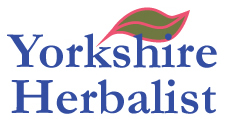Calendula
Calendula officinalis L. Pot Marigold, English Marigold

Family: Compositae
Description: “Bushy, aromatic long-lived annual, with branched stems and lanceolate leaves. Flower are up to 7cm across with yellow to orange ray florets, produced during summer and autumn. H and S 50-70cm. Fully hardy.” (Bown, 1995)
Habitat: Common garden plant.
Harvest: Flowers are cut in dry conditions and stripped of petals.
Parts used: PETALS, FLOWERHEADS.
Dosage: 1:5 2-10ml, FE 40% 1-3ml, dried 5-15g daily;
Actions:
-ANTI-INFLAMMATORY,
-SPASMOLYTIC,
-VULNERARY,
-ANTISEPTIC (Wren, 1988);
-NON-TANNIN ASTRINGENT (Mills, 1993);
Indications:
-Inflammation of the skin and especially gynaecological complaints eg. pelvic inflammatory disease (AD);
-Unresolved infection or erosion in the upper digestive tract, particularly if evidence of bleeding into the gut (classically the dark stools of melaena),
-Swollen lymph nodes (Mills, 1993);
-Gastric or duodenal ulcer, jaundice, gallbladder inflammation,
-Balanitis, vaginal thrush (Bartram);
External usage:
-Wounds where skin is broken (Bartram),
-An effective addition (with myrrh) to local applications to combat fungal and other infections of the vagina, or to treat broken skin surfaces in inflammatory or fungal skin conditions,
-A powerful mouthwash to check infections of the gums, mucous membranes and throat, and, in infusion form only, as an eyewash,
-In ointment form, for repairing minor damage to the skin such as subdermal broken capillaries or sunburn (Mills, 1993);
Safety: Very safe.
Contra-indications: None known.
Key Constituents (Wren, 1988):
-Triterpenes,
-Flavonoids,
-Volatile oil,
-Chlorogenic acid.
Pharmacology: Locally astringent, due mainly to the resin component but probably to other water insoluble constituents as well. One substance has been found to promote blood clotting and the whole plant acts to reduce capillary effusion; the plant clearly acts against fungal , amoebic, bacterial and even viral infections and also has a potent anti-inflammatory action as well. There are some hormonal influences stemming probably from the sterol fraction. (Mills, 1991).
Clinical trials: None found.
Toxicology: No studies found.
History: Calendula from Latin kalendae, “first day of the month”, in the Roman calendar. C. officinalis was used in early Indian and Arabic cultures, and in ancient Greece and Rome, as a medicinal herb and as a colourant for fabrics, foods and cosmetics. (Bown, 1995) Macer’s 12th century herbal recommends simply looking at the plant to improve eyesight, clear the head and encourage cheerfulness. In Culpeper’s day, calendula was taken to ‘strengthen the heart’ and was highly regarded for smallpox and measles. (Ody, 1993)
Traditional and Practitioner sources:
“Applied externally for a wide range of skin problems and inflammations, the petals are also taken internally for many gynocological. Feverish or toxic conditins, and to move liver energies.
-Take the infusion for menopausal problems, period pain, gastritis and inflammation of the oesophagus.
-Take the tincture for stagnant liver problems, including sluggisg digestion, and also for menstrual disorders, particularly irregular or painful periods.
-Apply the cream for any problem involving inflammation or dry skin: wounds, dry eczema, sore nipples from breastfeeding, scalds and sunburn.
-Use the essential oil on chilblains, haemorrhoids and broken capillaries.” Penelope Ody (1993: 43)
“Tooth extractions: rinse mouth with infusion of florets or much-diluted tincture -5 to 10 drops in water.” (Bartram)
“It is traditionally internally for viral infections of the liver, and for varicose veins -but with great caution as its liver-stimulant effect may stir up a slow liver a little too fast and produce a ‘bilious’ nausea. Also, due to its high carotene content ( the orange building-block for vit A production), it is possible to overdose internally and upset the liver, gall bladder and pancreas. Slow, steady and gradually are the ways to introduce a carotene-rich plant internally. …
It appears at times to be miraculous in its speed of healing; almost the next day, even with severe trauma, there should be no sign of inflammation, throbbing, infection or scar tissue to form later. It promotes granulation in open wounds, and its great antiseptic properties make it the first first-aid to reach for. [also amazing in treating blisters]” Dorothy Hall (1998: 117)
“Marigold is a potent liver remedy…use in jaundice, cirrhosis and hepatitis. Use also as a digestive stimulant, for lack of appetite, poor digestion, which often results in smelly feet, and absorption, constipation, wind and peptic ulcers. It is a powerful healing remedy and helps to heal wounds in the digestive tract such as ulcers, colitis and diverticulitis.
As it is a powerful blood cleanser, I have used it with great success in cases of chronic eczema, boils, acne and teenage spots. It works on the lymphatic system and so is used for swollen glands, tonsillitis, chronic sore throats and where the immune system of the body has lowered resistance. Use for viral and fungal infections.
[Also has a special affinity for female reproductive system and especially for PMS due to liver action]” Elisabeth Brooke (1992: 34-36)
“These three uses; as 1) a wound medicine, 2) a remedy for affections of the lymphatic glands, and 3) a general immune tonic, are interlocking and bring out the true genius of the plant.” Matthew Wood (1997: 176)


